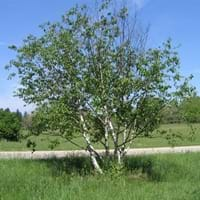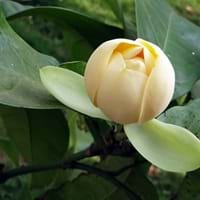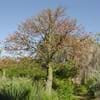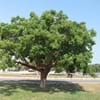Life Span
Annual
Perennial
Origin
North America, Northeastern United States, North-Central United States, Alaska, Canada
Cambodia, China, India, Indonesia, Papua New Guinea, Philippines, Singapore, Thailand, Viet Nam
Types
Ornamental Tree
Magnolia angatensis, Magnolia beccarii, Magnolia championii
Habitat
Slopes, Swamps
Wide range of ecological site
USDA Hardiness Zone
2-7
10-15
AHS Heat Zone
7-1
Not Available
Sunset Zone
A1, A2, A3, 1a, 1b, 2a, 2b, 3a, 3b, 4, 5, 6
Not Available
Habit
Oval or Rounded
Oval or Rounded
Flower Color
Yellow
Gold, White, Yellow
Flower Color Modifier
Bicolor
Bicolor
Leaf Color in Spring
Light Green
Green
Leaf Color in Summer
Dark Green
Green
Leaf Color in Fall
Light Yellow, Gold
Green, Yellow green
Leaf Color in Winter
Not Available
Gray Green
Leaf Shape
Egg-shaped
Ovate
Plant Season
Spring, Summer, Fall, Winter
Spring, Summer
Sunlight
Full Sun, Partial Sun
Full Sun, Partial Sun
Growth Rate
Medium
Medium
Type of Soil
Loam, Sand
Clay, Loam
The pH of Soil
Acidic, Neutral
Acidic, Neutral
Soil Drainage
Well drained
Well drained
Bloom Time
Spring
Spring, Late Spring
Tolerances
Not Available
Not Available
Where to Plant?
Ground
Ground
How to Plant?
Stem Planting
Seedlings, Transplanting
Plant Maintenance
Medium
Medium
Watering Requirements
Requires regular watering
Prefer drip-irrigation instead of Over-head watering
In Summer
Lots of watering
Lots of watering
In Spring
Moderate
Moderate
In Winter
Average Water
Average Water
Soil pH
Acidic, Neutral
Acidic, Neutral
Soil Type
Loam, Sand
Clay, Loam, Sand
Soil Drainage Capacity
Well drained
Well drained
Sun Exposure
Full Sun, Partial Sun
Full Sun, Partial Sun
Pruning
Remove damaged leaves, Remove dead branches, Remove dead leaves
Prune if you want to improve plant shape
Fertilizers
All-Purpose Liquid Fertilizer
Fertilize in late fall, fertilize in spring, Requires high amount of nitrogen
Pests and Diseases
Red blotch
Aphids, Bacterial Blight, Canker, Crown gall, Hoplia beetle, Leaf burn, Leaf spot, Mealybugs, Powdery mildew, Red blotch, Scorch, Soft scales, Thripes, Wetwood
Plant Tolerance
Drought
Not Available
Flower Petal Number
Not Available
Single
Foliage Texture
Medium
Coarse
Foliage Sheen
Glossy
Matte
Attracts
Not Available
Not Available
Allergy
Not Available
Not Available
Aesthetic Uses
Showy Purposes
Showy Purposes
Beauty Benefits
Not Available
Treatment of Dark Spots
Edible Uses
Sometimes
Yes
Environmental Uses
Air purification
Air purification
Medicinal Uses
Cold, Cough, Gout, Laxative, Rheumatism, Wounds
Alzheimer’s Disease, Anxiety, Cancer, Digestion problems, Liver problems, Menstrual Cramps, Respiratory Disorders, Weight loss
Part of Plant Used
Leaves, Wood
Whole plant
Other Uses
Animal Feed, Sometimes used for making wine
Used as Ornamental plant, Used for its medicinal properties
Used As Indoor Plant
No
Yes
Used As Outdoor Plant
Yes
Yes
Garden Design
Feature Plant, Shade Trees
Feature Plant, Foundation, Shade Trees
Botanical Name
BETULA papyrifera
Magnolia liliifera
Common Name
Paper Birch
Egg magnolia
In Hindi
Paper birch
Magnolia liliifera
In German
Papierbirke
Magnolia Liliifera
In French
Le bouleau à papier
Magnolia Liliifera
In Spanish
abedul de papel
Magnolia Liliifera
In Greek
σημύδα χαρτί
Magnolia Liliifera
In Portuguese
vidoeiro de papel
Magnolia Liliifera
In Polish
brzoza papieru
Magnolia Liliifera
In Latin
Paper betula
Magnolia Liliifera
Phylum
Magnoliophyta
Tracheophyta
Class
Magnoliopsida
Magnoliopsida
Order
Fagales
Magnoliales
Family
Betulaceae
Magnoliaceae
Clade
Angiosperms, Eudicots, Rosids
Angiosperms, Magnoliids
Tribe
Not Available
Not Available
Subfamily
Not Available
Not Available
Number of Species
Not Available
Not Available
Properties of Paper Birch and Magnolia Liliifera
Wondering what are the properties of Paper Birch and Magnolia Liliifera? We provide you with everything About Paper Birch and Magnolia Liliifera. Paper Birch doesn't have thorns and Magnolia Liliifera doesn't have thorns. Also Paper Birch does not have fragrant flowers. Paper Birch has allergic reactions like Not Available and Magnolia Liliifera has allergic reactions like Not Available. Compare all the properties and characteristics of these two plants. Find out which of these plant can be used as indoor plant. If you are interested to decorate your house and garden, find out aesthetic uses, compare them and select the plant which will beautify your surrounding. Along with beautification, try comparing medicinal and edible uses of Paper Birch and Magnolia Liliifera and you can choose the plant having best and most benefits.
Season and Care of Paper Birch and Magnolia Liliifera
Season and care of Paper Birch and Magnolia Liliifera is important to know. While considering everything about Paper Birch and Magnolia Liliifera Care, growing season is an essential factor. Paper Birch season is Spring, Summer, Fall and Winter and Magnolia Liliifera season is Spring, Summer, Fall and Winter. The type of soil for Paper Birch is Loam, Sand and for Magnolia Liliifera is Clay, Loam while the PH of soil for Paper Birch is Acidic, Neutral and for Magnolia Liliifera is Acidic, Neutral.
Paper Birch and Magnolia Liliifera Physical Information
Paper Birch and Magnolia Liliifera physical information is very important for comparison. Paper Birch height is 1,520.00 cm and width 760.00 cm whereas Magnolia Liliifera height is 1,500.00 cm and width 1,000.00 cm. The color specification of Paper Birch and Magnolia Liliifera are as follows:
Paper Birch flower color: Yellow
Paper Birch leaf color: Light Green
Magnolia Liliifera flower color: Gold, White and Yellow
- Magnolia Liliifera leaf color: Green
Care of Paper Birch and Magnolia Liliifera
Care of Paper Birch and Magnolia Liliifera include pruning, fertilizers, watering etc. Paper Birch pruning is done Remove damaged leaves, Remove dead branches and Remove dead leaves and Magnolia Liliifera pruning is done Prune if you want to improve plant shape. In summer Paper Birch needs Lots of watering and in winter, it needs Average Water. Whereas, in summer Magnolia Liliifera needs Lots of watering and in winter, it needs Average Water.





